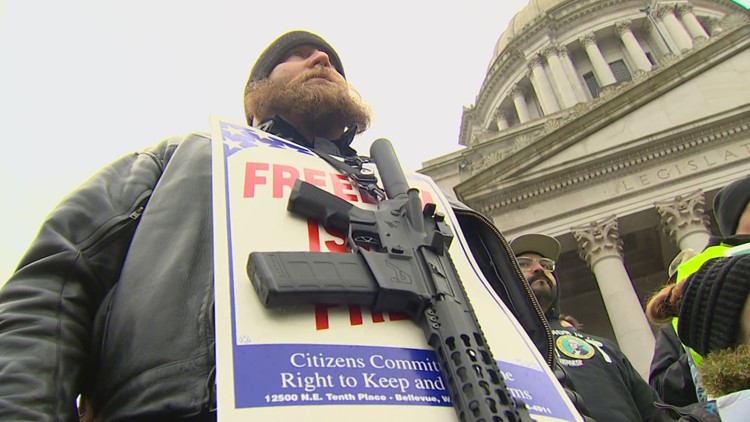
In Bass v. City of Edmonds, the Washington Supreme Court struck down an Edmonds gun storage ordinance in a court order reaffirming state law that local governments can’t impose their own firearms regulations.
FACTUAL BACKGROUND
After robust debate following a mass shooting at the nearby Marysville Pilchuck High School, the Edmonds City Council adopted an ordinance requiring residents to safely store their firearms when not in use. Ordinance 4120, codified as Edmonds City Code (ECC) chapter 5.26. The ordinance contains two operative provisions. Under the “storage provision,”
“It shall be a civil infraction for any person to store or keep any firearm in any premises unless such weapon is secured by a locking device, properly engaged so as to render such weapon inaccessible or unusable to any person other than the owner or other lawfully authorized user.”
“Notwithstanding the foregoing, for purposes of this section, such weapon shall be deemed lawfully stored or lawfully kept if carried by or under the control of tthe owner or other lawfully authorized user.”
ECC 5.26.020. Under the “unauthorized access” provision,
“It shall be a civil infraction if any person knows or reasonably should know that a minor, an at-risk person, or a prohibited person is likely to gain access to a firearm belonging to or under the control of that person, and a minor, an at-risk person, or a prohibited person obtains the firearm.”
Violation of either provision carries a civil fine of as much as $10,000 if an at-risk person or child gained access to an unsecured gun.
At around the same time, Washington voters enacted Initiative 1639. This initiative, among many other things, criminalizes unsafe storage of firearms but in more limited circumstances than Edmonds’ ordinance. Unlike the City of Edmonds ordinance, the voter initiative – later codified as RCW 9.41.360 – specifically did not mandate how or where a firearm must be stored.
The legality of the Edmonds’ ordinance was challenged and eventually made its way to the WA Supreme Court.
COURT’S ANALYSIS & CONCLUSIONS
First, the Court found that the plaintiffs had legal standing to challenge the ordinance.
Next, the Court turned to the issue of whether existing statute under RCW 9.41.290 preempts this ordinance. The statute reads the following, in part:
“The state of Washington hereby fully occupies and preempts the entire field of firearms regulation within the boundaries of the state, including the registration, licensing, possession, purchase, sale, acquisition, transfer, discharge, and transportation of firearms, or any other element relating to firearms or parts thereof, including ammunition and reloader components. Cities, towns, and counties or other municipalities may enact only those laws and ordinances relating to firearms that are specifically authorized by state law, as in RCW 9.41.300, and are consistent with this chapter.” ~RCW 9.41.290
Ultimately, the court ruled that Washington state law RCW 9.41.290 “fully occupies and preempts the entire field of firearms regulation within the boundaries of the state.”
Thursday’s ruling was a victory for gun rights organizations, such as the National Rifle Association and the Bellevue-based Second Amendment Foundation, both of which participated in the legal challenge.
Please contact my office if you, a friend or family member are charged with a firearm offense or any other crime. Hiring an effective and competent defense attorney is the first and best step toward justice.


/https://static.texastribune.org/media/files/0d28e76415e741309d9355b0d7a97bb9/Ketanji%20Brown%20Jackson%20REUTERS.jpg)












